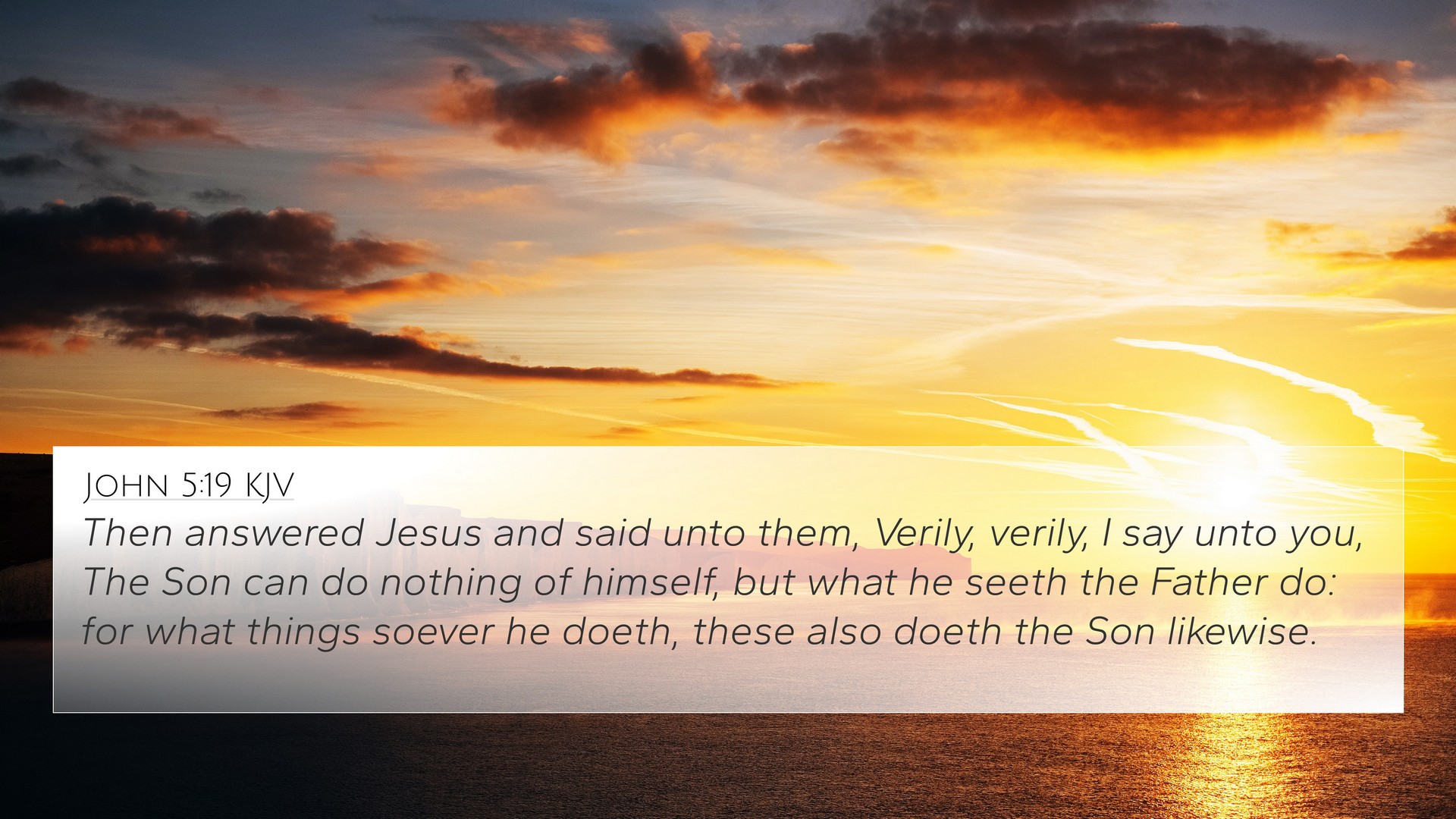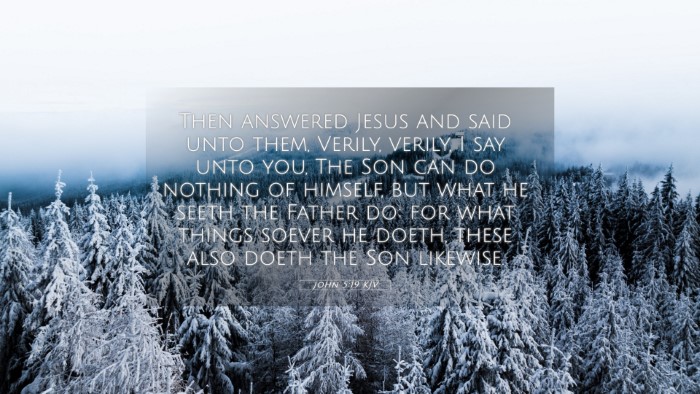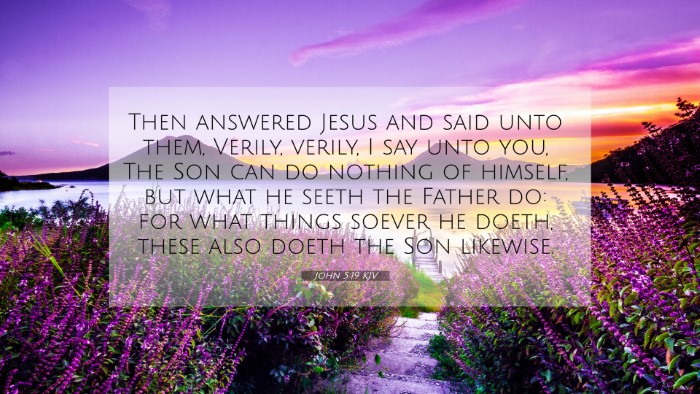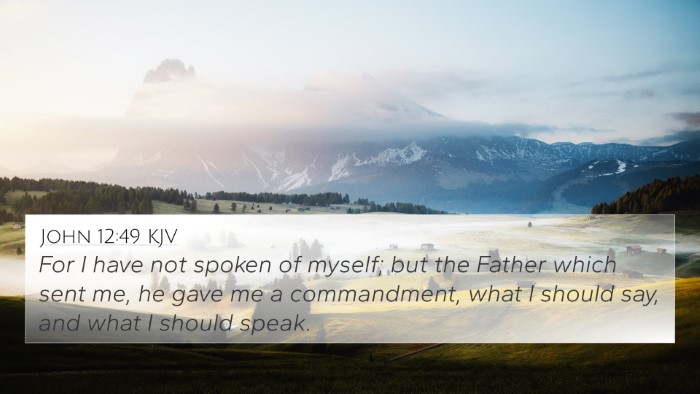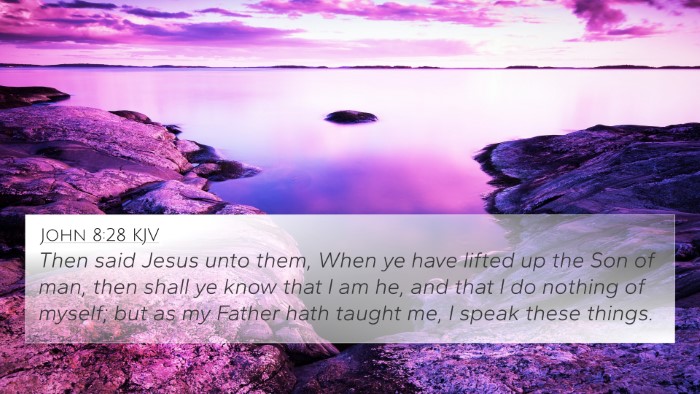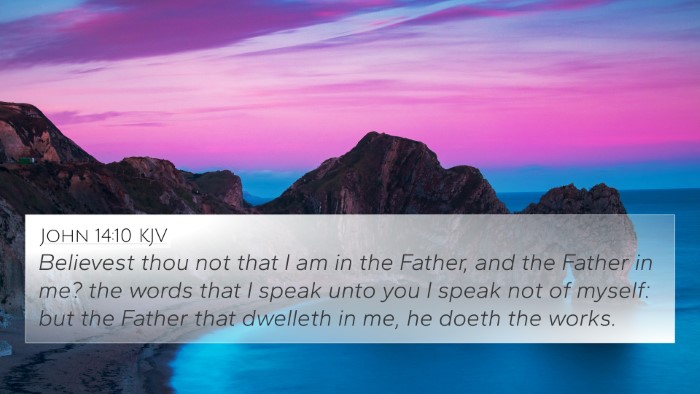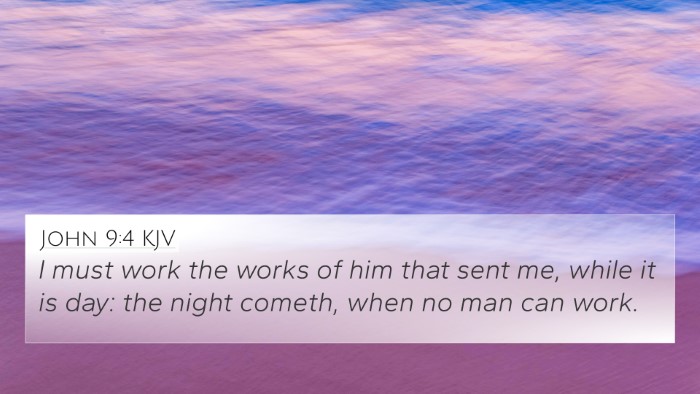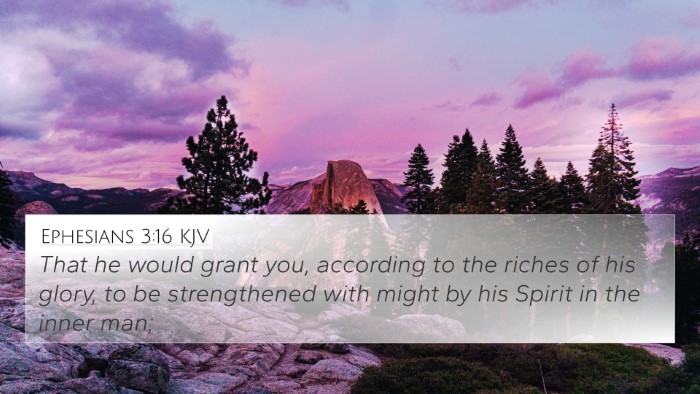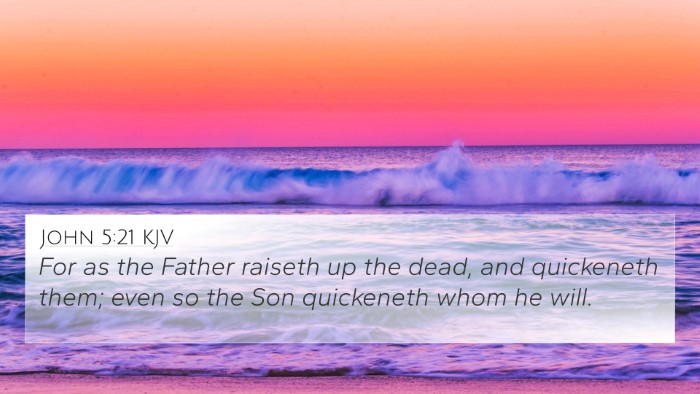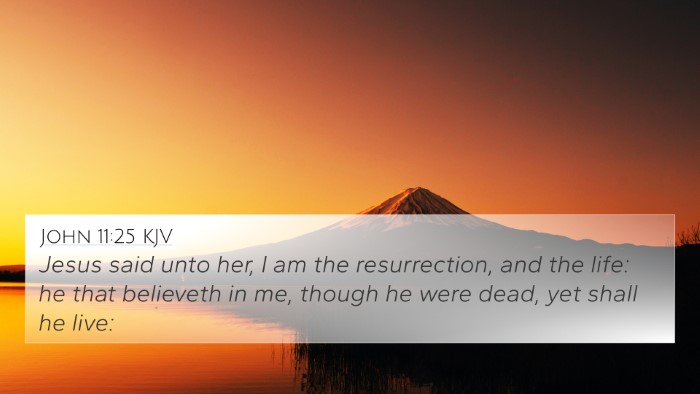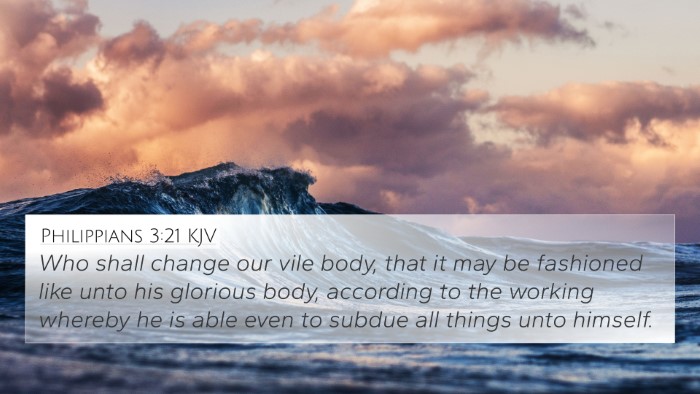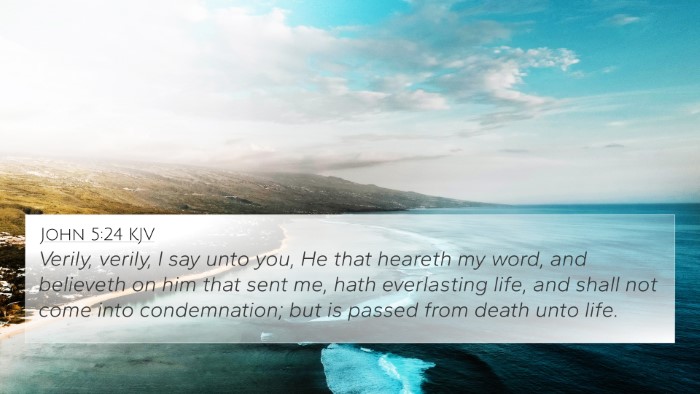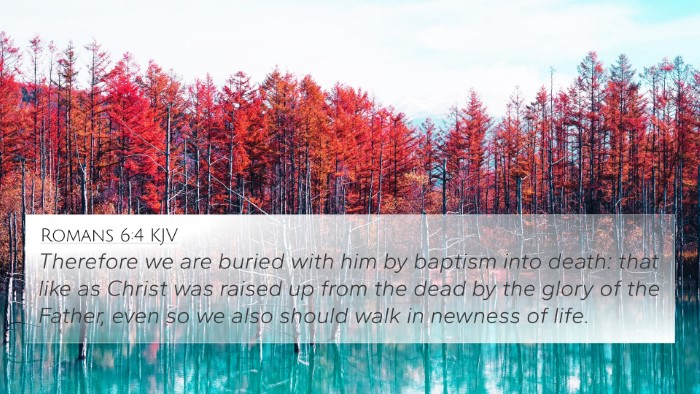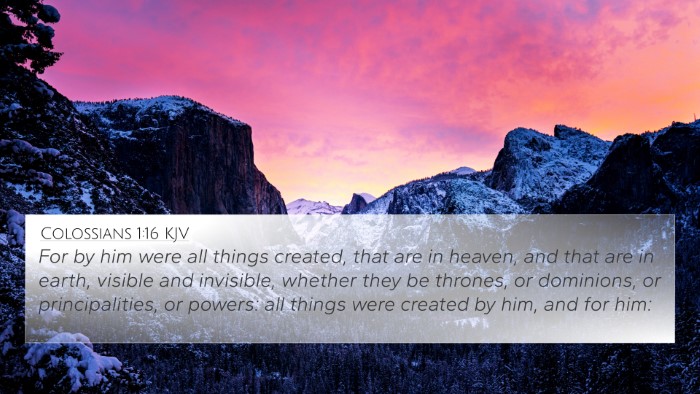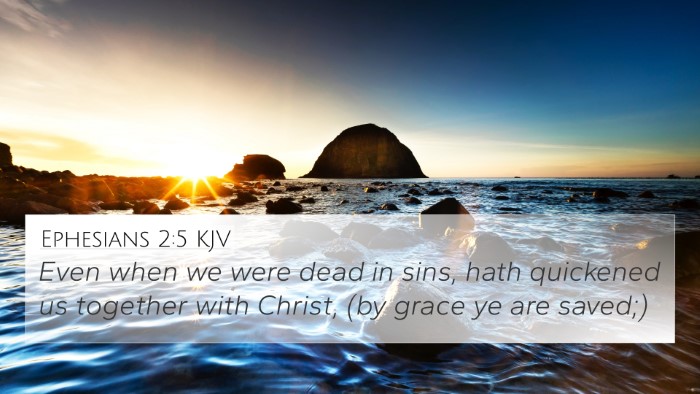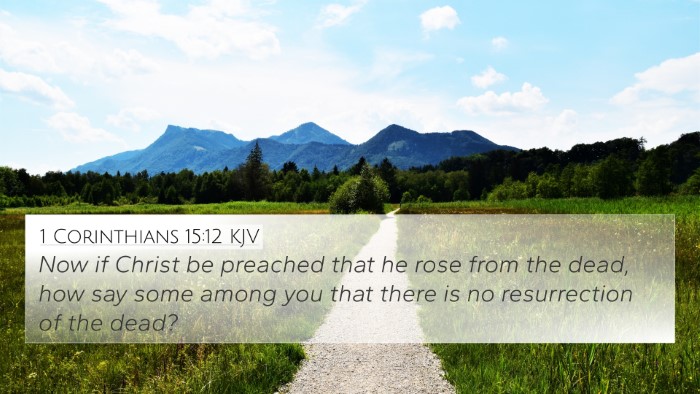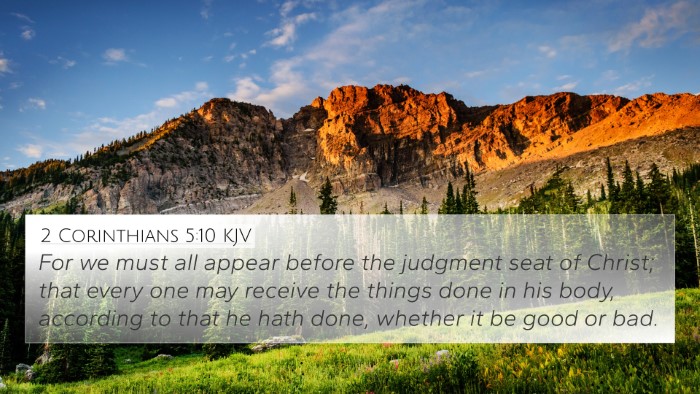Understanding John 5:19 – A Deep Dive into Scripture
Verse: John 5:19 - “So Jesus answered them, ‘Truly, truly, I say to you, the Son can do nothing of his own accord, but only what he sees the Father doing. For whatever the Father does, that the Son does likewise.’”
This verse captures a profound truth about the relationship between Jesus and the Father, emphasizing His divine authority and unity with God the Father. Below, we will explore interpretations from various public domain commentaries and identify connections to other biblical texts.
Commentary Insights
Matthew Henry's Commentary Insights
Henry emphasizes that Jesus, as the Son of God, presents His actions as being wholly aligned with the will of the Father. He indicates that Christ's role is not independent but rather responsive to the Father's will.
Henry argues that this relationship exemplifies the theme of obedience and the manifestation of God's will on earth through Christ. It enhances our understanding of Jesus' humility and mode of operation as an example for believers.
Albert Barnes' Commentary Insights
Barnes further elucidates that Jesus acknowledges His total dependence on the Father, which serves as a model for believers to follow. He points out that the miraculous works of Jesus are direct reflections of divine authority.
Barnes notes that the emphasis on 'seeing the Father' speaks to the unique and intimate relationship between the Father and the Son, suggesting that understanding the Father’s work is crucial for comprehending Jesus’ ministry.
Adam Clarke's Commentary Insights
Clarke interprets this verse with an emphasis on the unity between the Father and the Son. He explains that the works of one are the works of the other, establishing a foundational principle of Christian doctrine regarding the Trinity.
Clarke comments on how this verse also invites believers to recognize their own need to align their actions with divine will, highlighting the call to obedience and discipleship in the Christian life.
Bible Cross-References for John 5:19
- John 10:30: “I and the Father are one.” – This provides further insight into the unity of purpose and essence between Jesus and the Father.
- Philippians 2:7-8: “...but made himself nothing, taking the form of a servant...” – Illustrates Christ’s humility and obedience to the Father’s will.
- Matthew 7:21: “Not everyone who says to me, ‘Lord, Lord,’ will enter the kingdom of heaven, but the one who does the will of my Father.” – Reflects the importance of doing the Father’s will.
- John 14:10: “Do you not believe that I am in the Father and the Father is in me?” – Emphasizes the indwelling relationship and cooperative work of the Son and the Father.
- Luke 22:42: “Not my will, but yours, be done.” – Jesus’ own expression of obedience to the Father’s will.
- John 6:38: “For I have come down from heaven, not to do my own will but the will of him who sent me.” – Reinforces the theme of submission to divine authority.
- John 8:28: “So Jesus said to them, ‘When you have lifted up the Son of Man, then you will know that I am he, and that I do nothing on my own authority, but speak just as the Father taught me.’” – Illustrates the continuity of thought regarding divine instruction.
Thematic Connections with Other Bible Verses
The passage in John 5:19 not only interacts with the immediate context of John's Gospel but also resonates with numerous themes found throughout Scripture:
- Divine Authority: Explored in Matthew 28:18 where Jesus proclaims, “All authority in heaven and on earth has been given to me.”
- Obedience to God's Will: Numerous scriptures emphasize the importance of aligning our actions with God's desires (e.g., 1 Samuel 15:22).
- The Role of the Holy Spirit: The Holy Spirit aids believers in understanding and performing God's will, thus linking to John 5:19 in practical application (see Acts 1:8).
Tools for Cross-Referencing Scripture
For those interested in pursuing deeper study through cross-references, various tools are available:
- Utilize a Bible Concordance: Search through keywords and thematic elements.
- Employ a Bible Cross-Reference Guide: This can aid in identifying and following thematic connections.
- Explore Cross-Reference Bible Study: Groups often focus on cross-references to enhance understanding.
- Engage with a Bible Reference Resource that includes notes or margin references to connect verses.
- Utilize Bible Chain References to trace topics or themes across scripture.
Conclusion
In conclusion, John 5:19 unfolds a profound truth about Christ's relationship with the Father, emphasizing obedience, unity, and divine authority. By utilizing the insights gained from public domain commentaries and engaging with cross-references, believers can deepen their understanding of this pivotal scripture and its implications for personal faith and discipleship.
Through carefully linking Bible scriptures, we can explore the interwoven nature of the biblical narrative and how themes resonate across both the Old and New Testaments. This encourages a more enriched and informed faith journey.
